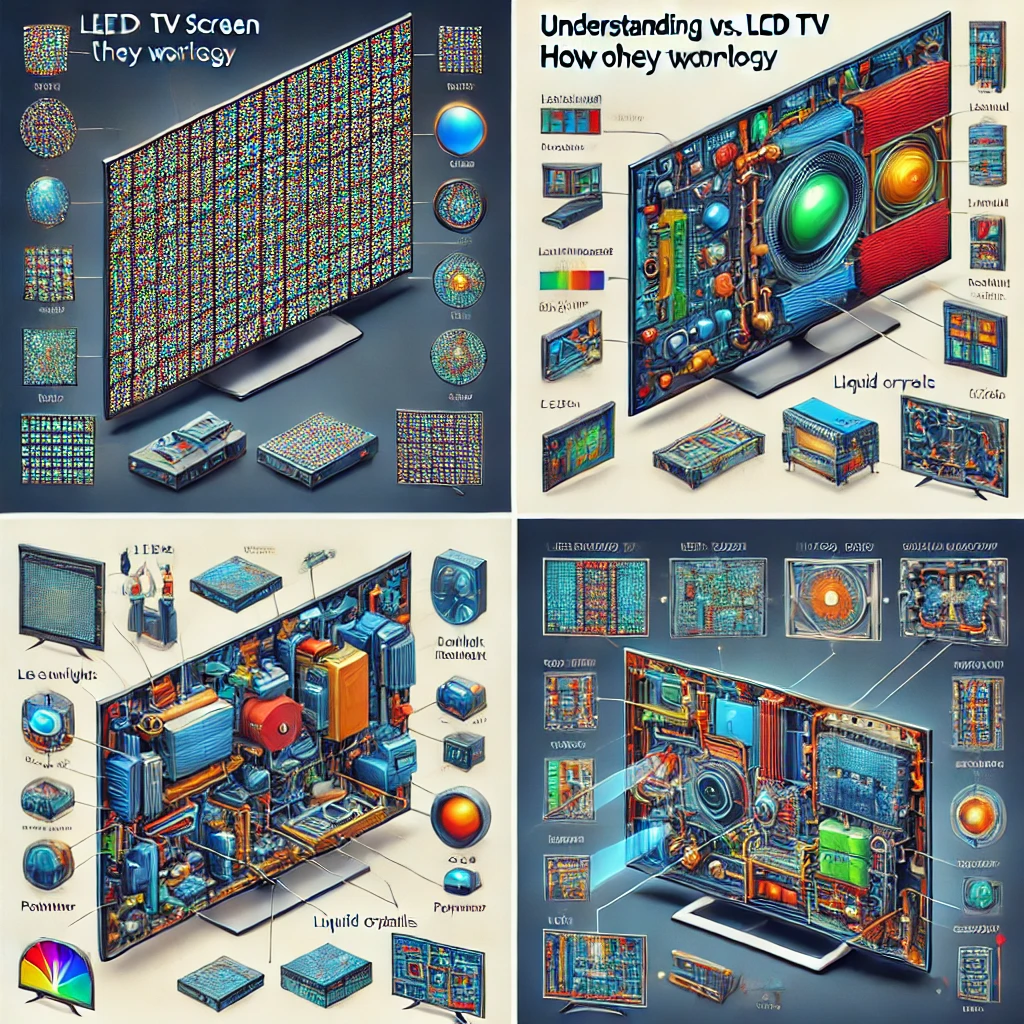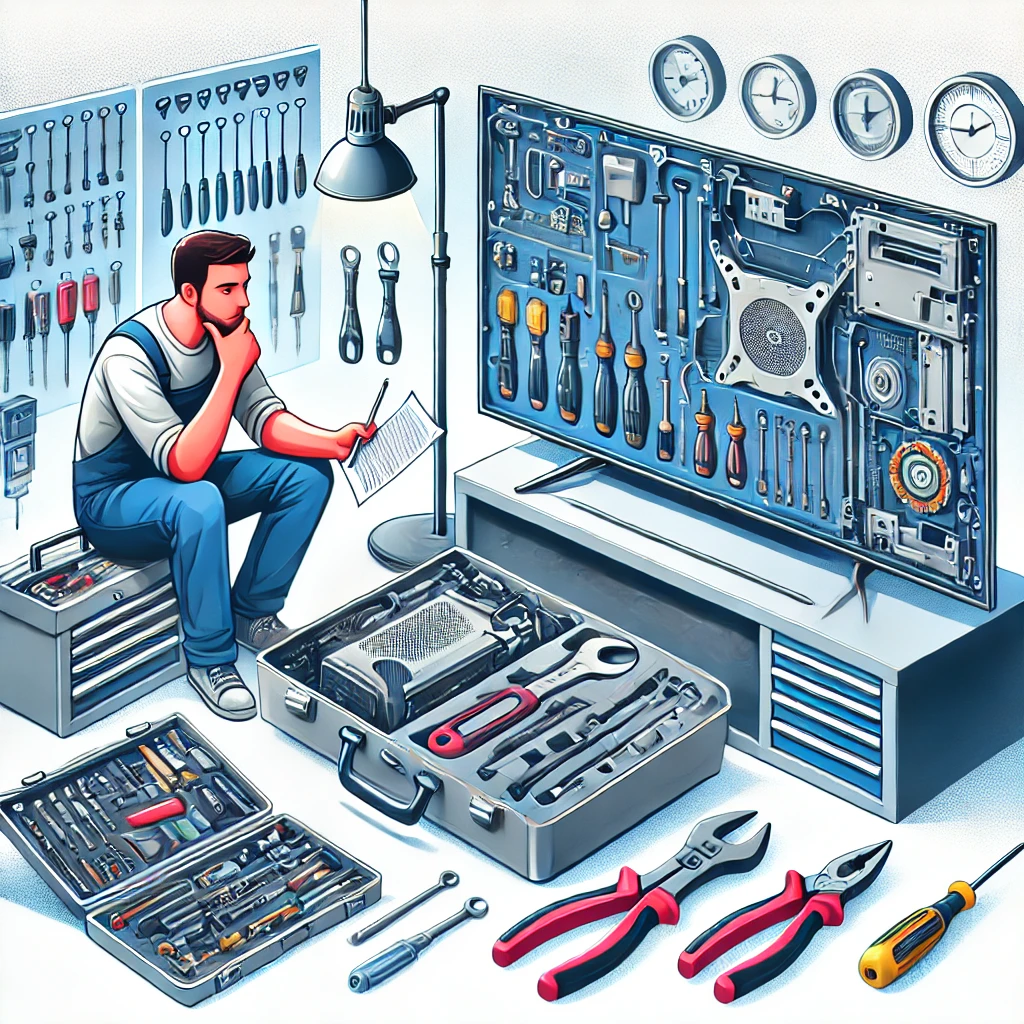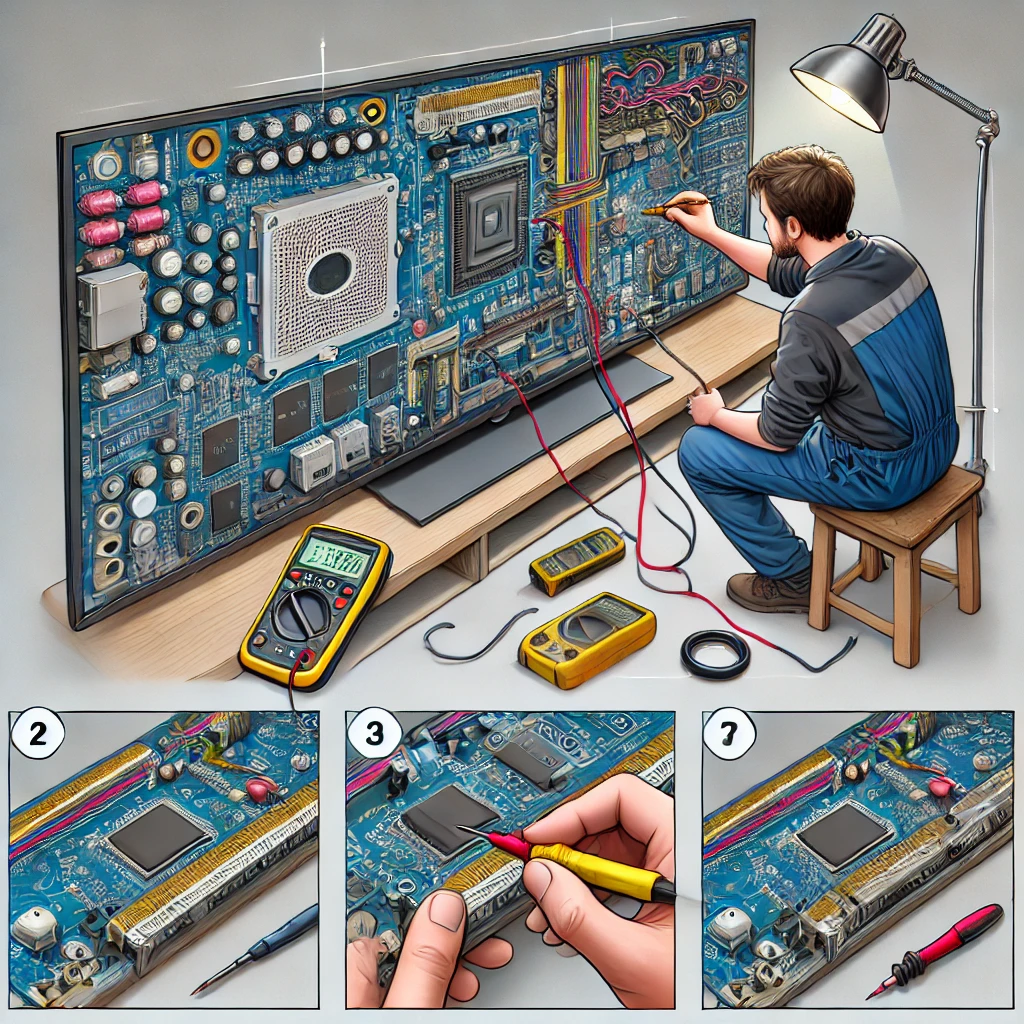T-Con Board Troubleshooting Guide 2025: Fix Display Problems Fast!
T-Con Board Troubleshooting: Fixing Display and Picture Problems
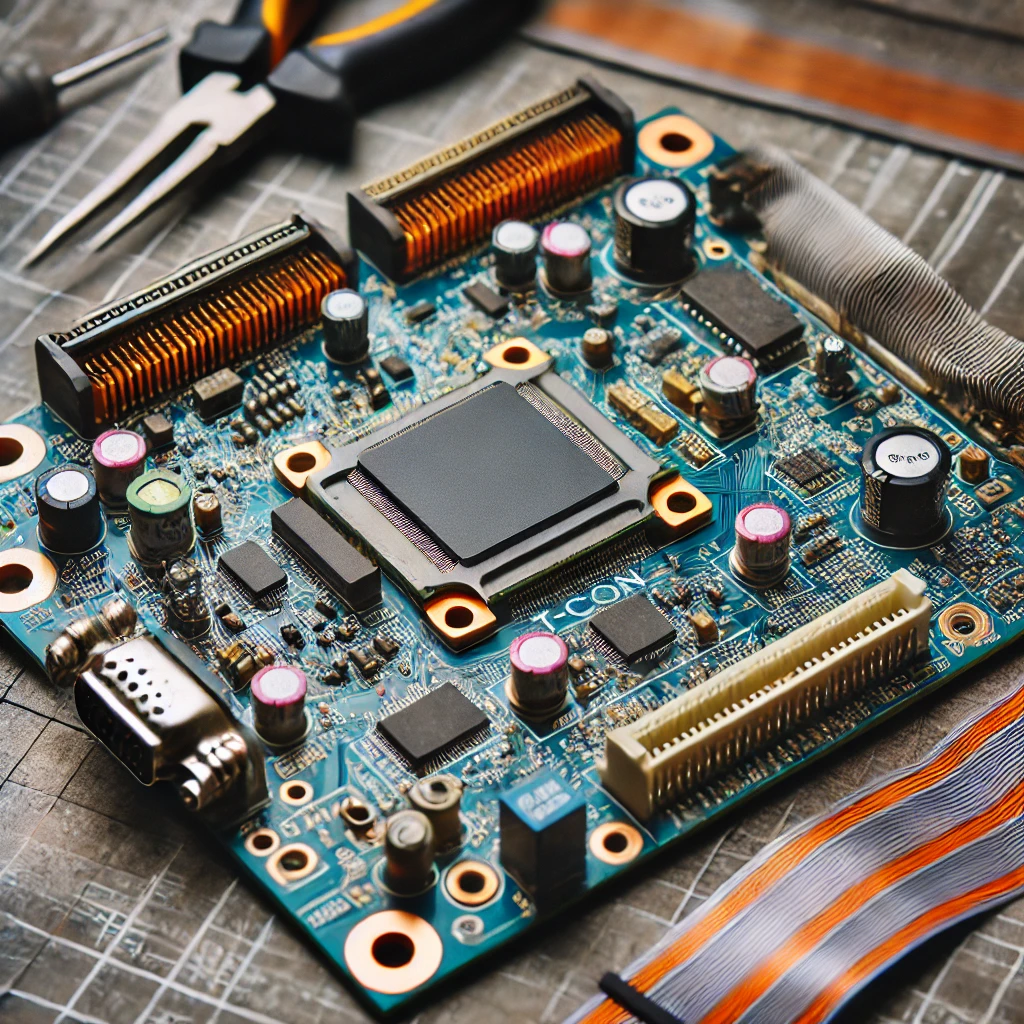
The T-Con Board (Timing Control Board) plays a crucial role in the functioning of LCD and LED TVs. It is responsible for processing video signals, controlling image synchronization, and ensuring a smooth display output. If your TV has display or picture issues, a faulty T-Con board might be the root cause.
A damaged or malfunctioning T-Con board can lead to various problems, including:
- Flickering screens
- Ghost images or double images
- Color distortion or washed-out colors
- Slow screen refresh rate
- Half-screen display issues
Since the T-Con board acts as the bridge between the main board and the LCD panel, any failure can disrupt proper signal transmission. Diagnosing and fixing T-Con board issues requires careful inspection and troubleshooting. In this guide, we will walk you through the steps to identify and repair common LCD TV display problems caused by a faulty T-Con board.
Common Symptoms of a Faulty T-Con Board
A faulty T-Con board can cause multiple LCD TV display problems, making it difficult to watch your favorite content. Since the T-Con board (Timing Control Board) is responsible for processing and transmitting video signals to the screen, any malfunction can result in noticeable issues. Below are some of the most common symptoms that indicate T-Con board troubleshooting is needed:
1. No Picture or Blank Screen
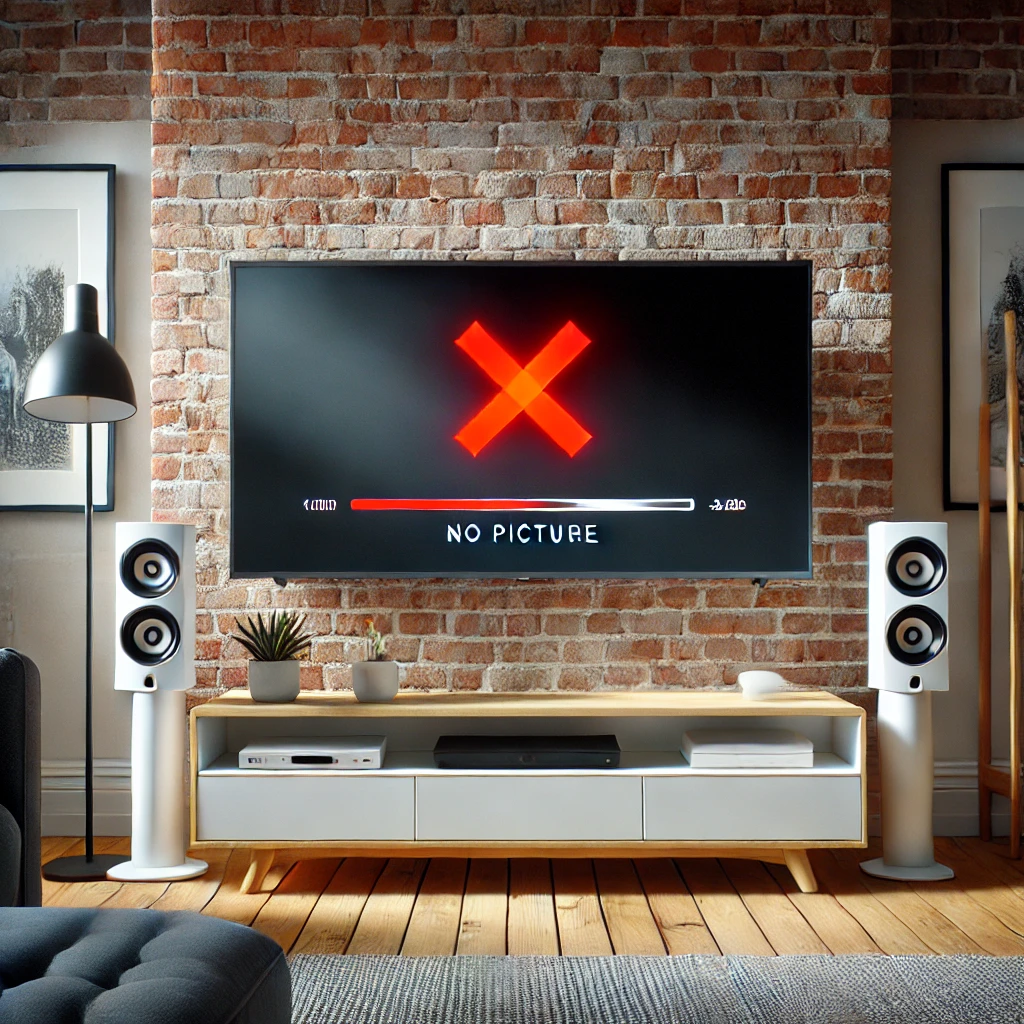
- The TV turns on, but the screen remains completely black.
- Sound is working, but there is no visual display.
- A faint glow or backlight may be visible, indicating the TV is powered on.
- This often happens due to a damaged T-Con board, faulty ribbon cables, or a blown fuse on the T-Con board.
2. Distorted or Jumbled Images
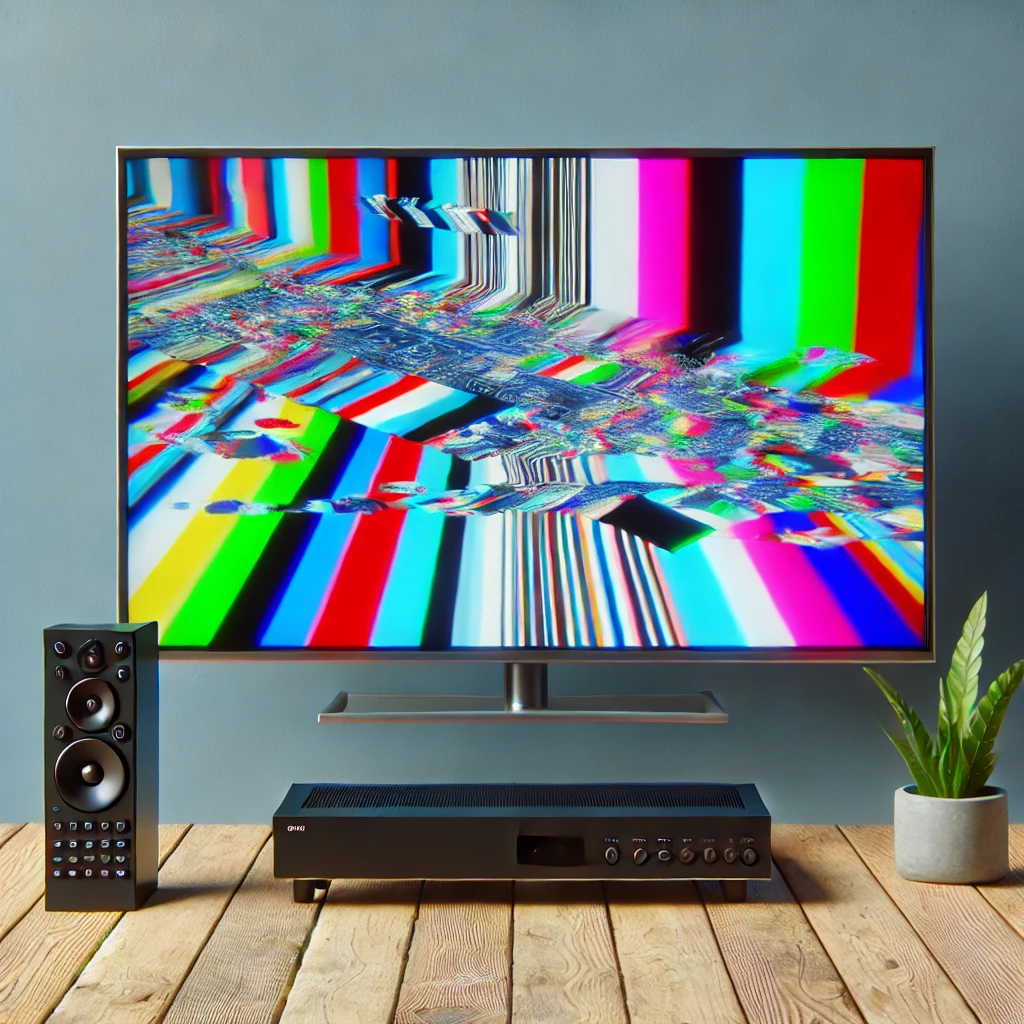
- The image on the screen appears misaligned, blurry, or scrambled.
- Some areas of the screen may have overlapping images or random color shifts.
- This symptom suggests the T-Con board is failing to process video signals properly, leading to LCD TV display problems.
3. Vertical or Horizontal Lines on the Screen
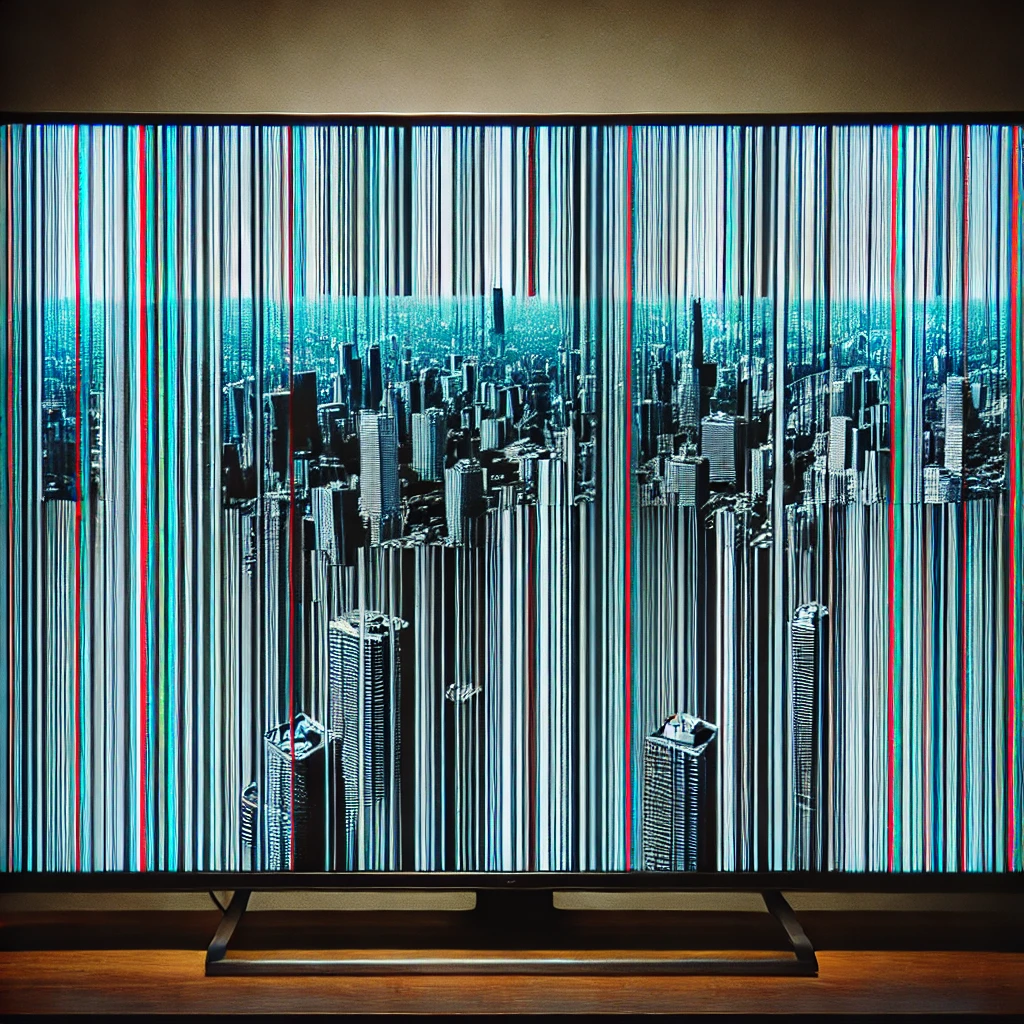
- Thin or thick lines (black, white, or colored) running across the screen.
- The lines may be static or flickering, affecting part or all of the display.
- Loose or damaged ribbon cables connected to the T-Con board may also cause this issue.
4. Double Image or Ghosting Effect
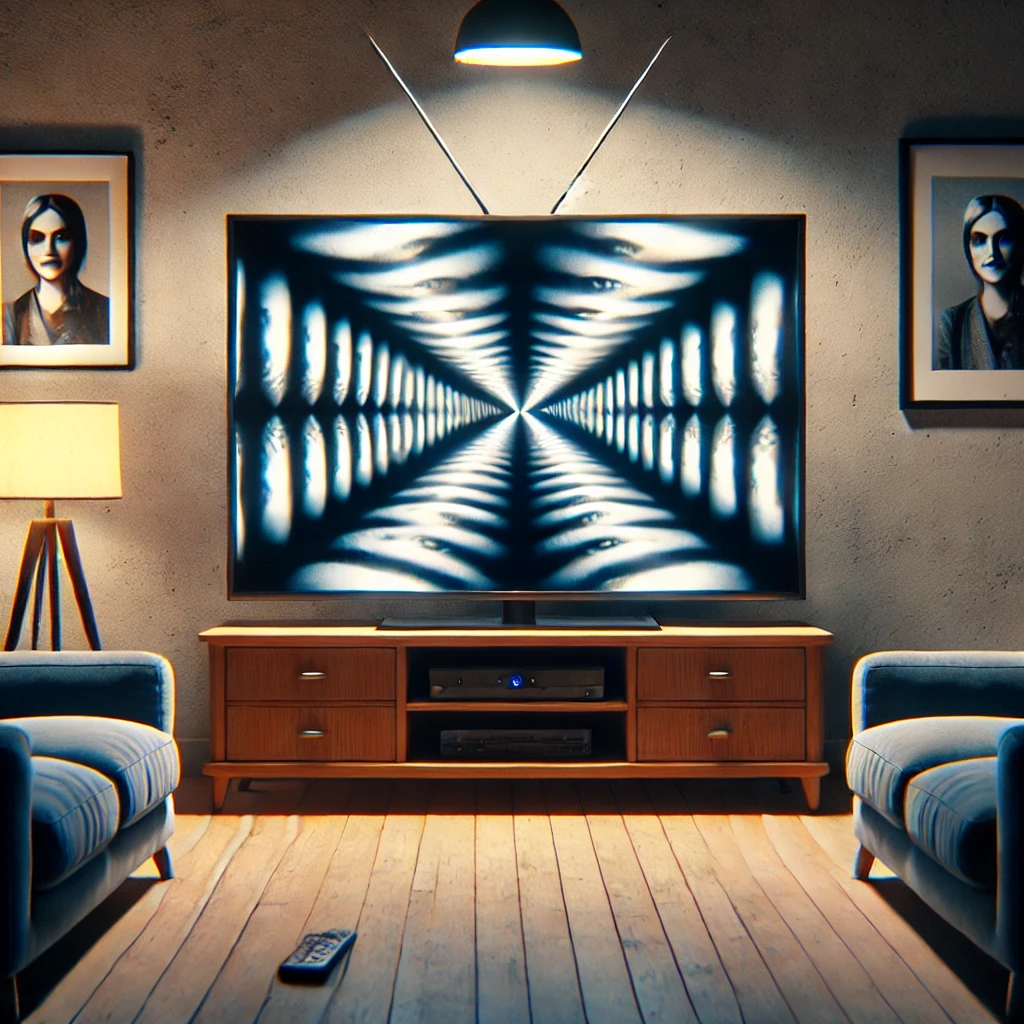
- The TV displays two identical images slightly offset from each other.
- This problem is commonly caused by a failing T-Con board or corrupted data processing from the main board.
- The issue may worsen over time, making it difficult to watch anything properly.
5. No Video but Sound Works Fine
- The TV has normal sound output, but the screen remains black or gray.
- This indicates that the T-Con board is not sending the video signal to the panel, even though the audio system is functioning.
6. Washed-Out or Incorrect Colors
- Colors appear dull, too bright, or completely off (e.g., everything appears green or red).
- A failing T-Con board may struggle to process the correct color information.
- Replacing the T-Con board or checking for loose connections can help resolve this issue.
Why Recognizing These Symptoms is Important
Ignoring T-Con board issues can lead to a completely non-functional TV over time. If you experience any of these LCD TV display problems, following a T-Con board troubleshooting process can help restore normal function.
Identifying the T-Con Board in Your TV
When dealing with LCD TV display problems, it is essential to locate and examine the T-Con board for potential faults. The T-Con board (Timing Control Board) is a critical component responsible for processing video signals and ensuring proper synchronization between the main board and the LCD panel. Before performing T-Con board troubleshooting, you need to correctly identify its position inside your TV.
Where is the T-Con Board Located?
The T-Con board is typically found at the upper center or middle portion of the TV’s back panel, near the LCD screen. It is usually connected to:
- The Main Board (via a LVDS ribbon cable)
- The LCD Panel (via two or more ribbon cables)
Since it is responsible for fine-tuning the image display, the T-Con board is always positioned close to the screen itself. Unlike the main board, which handles power and input processing, the T-Con board specifically manages pixel rendering and signal timing.
How to Identify the T-Con Board Inside Your TV?
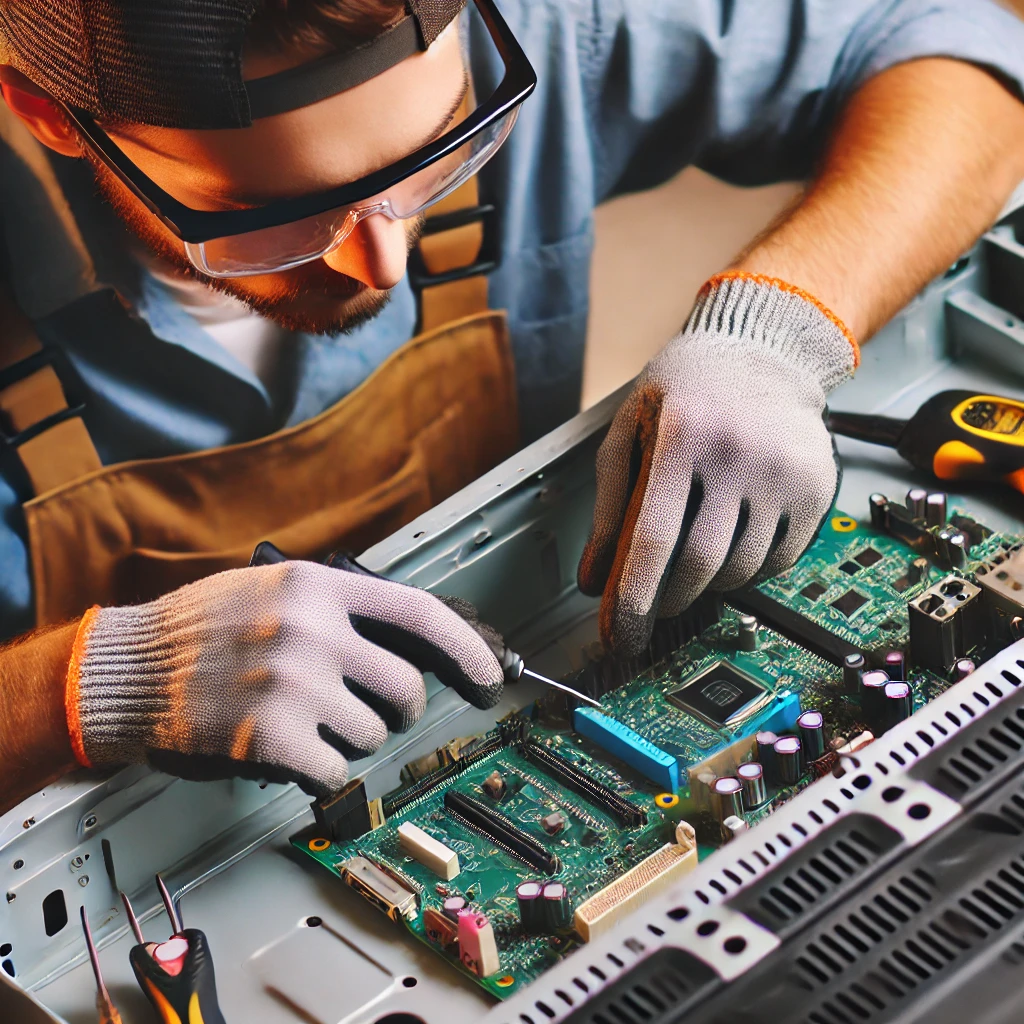
To locate the T-Con board, follow these steps:
- Unplug the TV – Always disconnect the power before opening the back panel.
- Remove the Back Cover – Use a screwdriver to take off the TV’s rear casing.
- Look Near the Center-Top Area – The T-Con board is often found behind a metal shield or protective cover.
- Identify the Ribbon Cables – The T-Con board has flat ribbon cables connecting it to the LCD panel. These cables are delicate and must be handled with care.
- Check for a Fuse or Test Points – Most T-Con boards have a small fuse and test points for measuring voltage, which helps in T-Con board troubleshooting.
- Look for the Board Label – The T-Con board usually has a model number printed on it, helping in finding replacements if needed.
Signs That the T-Con Board is Faulty
A faulty T-Con board (Timing Control Board) can cause various LCD TV display problems, leading to a distorted or non-functional screen. Since the T-Con board processes and transmits video signals from the main board to the LCD panel, any malfunction can disrupt the image quality or stop it from displaying altogether. Identifying the signs of a faulty T-Con board is crucial for effective T-Con board troubleshooting and repair.
1. No Picture or Black Screen (But Sound Works)
Symptoms:
- The TV powers on, but the screen remains black.
- Audio functions normally, but there’s no visible display.
- The screen may slightly glow, indicating that the backlight is working.
Possible Cause:
This issue often occurs when the T-Con board fails to process and send video signals to the screen. A faulty ribbon cable connection, a blown fuse, or a dead T-Con board may be responsible.
2. Distorted or Jumbled Image Display
Symptoms:
- The TV screen displays broken, scrambled, or misaligned images.
- Some sections of the image may appear shifted or out of place.
- The screen flickers with random blocks of colors or noise.
Possible Cause:
This occurs when the T-Con board malfunctions and fails to properly process video signals. Corrupted timing signals and improper data transmission can cause distorted output.
3. Vertical or Horizontal Lines on the Screen
Symptoms:
- Thin or thick lines (black, white, or colored) appear on the screen.
- The lines may be static or flickering and could run vertically or horizontally.
- The display may have missing sections or partial image distortion.
Possible Cause:
This often results from a loose or damaged ribbon cable connected to the T-Con board. It can also be caused by faulty LCD driver ICs on the T-Con board itself.
4. Double Image or Ghosting Effect
Symptoms:
- Two overlapping images appear, creating a ghosting effect.
- The display looks like it has a shadow or duplicate images.
- Image movement appears laggy or out of sync.
Possible Cause:
A failing T-Con board can send incorrect timing signals, causing images to misalign. Corrupt gamma voltage settings on the T-Con board may also lead to this issue.
5. Color Distortion and Washed-Out Display
Symptoms:
- The TV screen shows incorrect colors, appearing too bright or too dull.
- Some areas of the screen may have an unnatural green, red, or blue tint.
- The contrast and brightness levels fluctuate unexpectedly.
Possible Cause:
A defective gamma IC on the T-Con board can cause incorrect color reproduction. If the gamma voltages are off, the screen will display abnormal colors or lose contrast.
6. Half-Screen Display (One Side of Screen Not Working)
Symptoms:
- One side of the screen is completely black or dimmed.
- The other half of the screen displays images normally.
- There may be flickering or color mismatches between the two sides.
Possible Cause:
This happens when one of the LCD driver outputs from the T-Con board fails. A damaged ribbon cable or faulty LCD driver IC could be the culprit.
7. Flickering or Blinking Screen
Symptoms:
- The TV screen rapidly blinks or flickers.
- The flickering happens randomly or consistently.
- The issue persists across all input sources (HDMI, AV, etc.).
Possible Cause:
This often results from unstable power delivery or a bad connection on the T-Con board. If the board’s power regulator circuit is damaged, it may fail to maintain a stable signal output.
8. Blown Fuse on the T-Con Board
Symptoms:
- The TV doesn’t display anything despite having power.
- No signs of life from the screen, even with backlight functioning.
- Testing with a multimeter shows no voltage passing through the T-Con board.
Possible Cause:
A blown fuse on the T-Con board prevents it from receiving power, making it non-functional. Replacing the fuse with one of the same rating may restore functionality.
How to Confirm if the T-Con Board is Faulty?
To determine if the T-Con board is the cause of your LCD TV display problems, follow these T-Con board troubleshooting steps:
✔ Check Ribbon Cable Connections – Ensure that the LVDS cable and ribbon connectors are properly secured.
✔ Inspect for Burn Marks or Damage – Look for burnt components, bulging capacitors, or loose ICs on the T-Con board.
✔ Test the Fuse with a Multimeter – If the T-Con board has a fuse, check if it’s still intact.
✔ Measure Voltage at Key Test Points – Compare voltage readings to the board’s specifications.
✔ Try a Known Working T-Con Board – Replacing the T-Con board with a working one can confirm if it is the issue.
Why Recognizing These Signs is Important?
Understanding the symptoms of a faulty T-Con board helps in diagnosing and fixing T-Con board issues before replacing expensive parts like the LCD panel. Many of these problems can be resolved by repairing or replacing the T-Con board, saving time and money.
Why is Identifying the T-Con Board Important?
Many LCD TV display problems can be caused by a faulty T-Con board, but misdiagnosing the issue could lead to unnecessary repairs. Properly identifying the T-Con board allows you to perform T-Con board troubleshooting effectively, whether it involves cleaning connections, testing voltage, or replacing the board altogether.
Basic Tools Needed for Troubleshooting:
- Multimeter
- Screwdrivers (Philips and Flathead)
- Insulation gloves
- Magnifying glass (for inspecting connectors)
Step-by-Step Troubleshooting Guide:
- Check Ribbon Cables: Loose or damaged ribbon cables can cause display issues. Ensure they are properly connected and undamaged.
- Inspect the Fuse: Most T-Con boards have a fuse. If the fuse is blown, replace it with one of the same rating.
- Test Voltage: Use a multimeter to check the voltage levels. Compare them with the specifications printed on the board.
- Examine Capacitors: Look for bulged or leaking capacitors and replace them if necessary.
- Inspect the Screen Panel: Sometimes the issue lies with the screen panel itself. Connect the T-Con board to a known working panel to confirm.
- Replace the T-Con Board: If no components are visibly damaged and the issue persists, consider replacing the entire T-Con board.
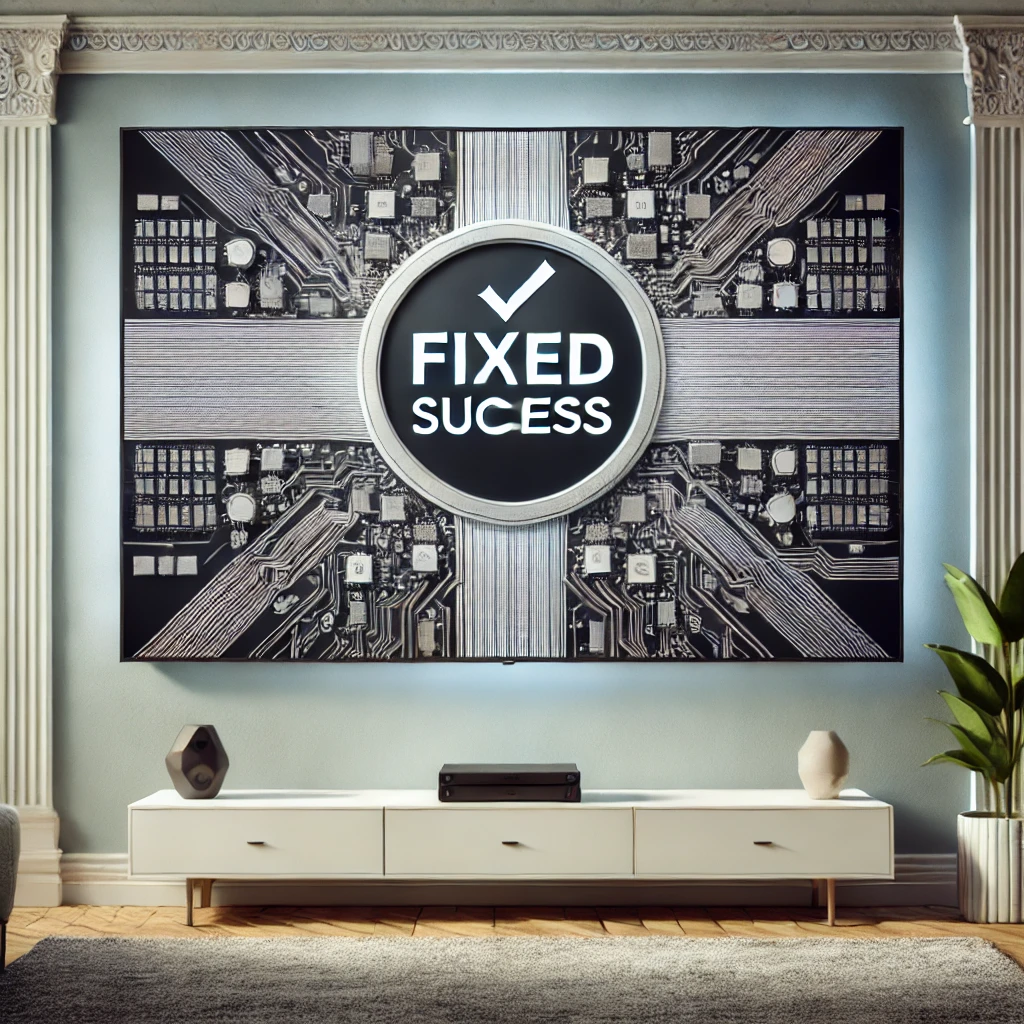
When to Seek Professional Help:
If you’re unable to diagnose the issue after trying the above steps, it’s best to consult a professional technician. Attempting advanced repairs without proper knowledge may cause further damage.
Conclusion:
The T-Con board is a vital component of your TV’s display system. By following these troubleshooting steps, you can diagnose and potentially fix common display problems. If you found this guide helpful, explore more in our LED/LCD TV Repair Training Guide: From Zero to Professional series!
External tools links for this work ;
- Sony T-con Board for Model 55W800B Compatible with Sony 55 inch LED TV
- LED LCD TV T-CON Logic Board 6870C-0370A LC320EXN New


